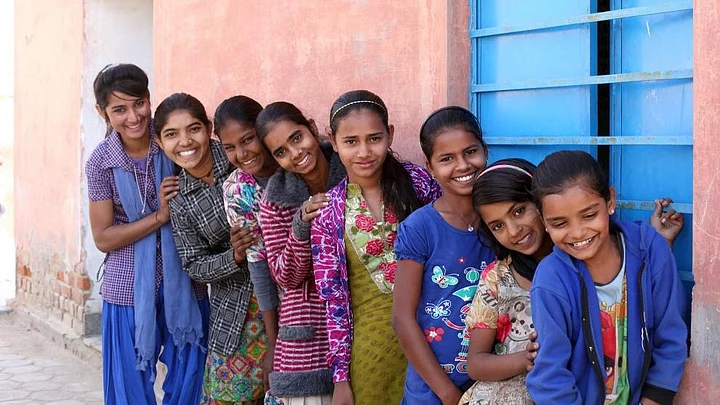It is well known that countries with higher levels of public spending on health report better outcomes. For instance, Brazil, China, Indonesia, the Philippines, and Thailand report higher levels of life expectancy at birth and better conditions of child survival than India.
This is not surprising given that in 2019, India’s government health expenditure per capita (in purchasing power parity, or PPP, terms) was $69 as against $154 in the Philippines, $175 in Indonesia, $492 in China, $524 in Thailand, and $610 in Brazil.
India’s low levels of public spending on health is a reason for poor health outcomes and – suboptimal economic performance. That greater investments in health will positively impact India’s GDP by increasing productivity over the long term is acknowledged in the National Health Policy 2017, which envisages increasing public health spending from 1.15 percent of the GDP to 2.5 percent of the GDP by 2025.
The general expectation is that the Union Budget 2023-24 will acknowledge this gap and increase public spending on health in general – and on adolescent girls in particular.
Making the Right Allocation
Budgetary allocations for health have consistently fallen short of ensuring that the public expenditure target of 2.5 percent of the GDP by 2025 is reached.
In financial year 2020-21, for instance, India’s budgetary allocation was only 1.8 percent of the total GDP. Although an improvement over the previous few decades, it is still significantly short of the target of reaching 2.5 percent by 2025.
While allocations to the health sector increased marginally in 2022-23 (according to Demand for Grants 2022-23 Analysis), they remain far below the levels required to provide good quality and affordable universal health coverage.
Increasing budgetary allocations is essential, but ensuring how it is spent is equally important.
The immediate priorities should be:
Investing adequately in preventive primary health care
Ensuring equitable access to good quality health care especially in rural India and for the marginalised and poor
Expanding the reach of public sector in health so that the government can reduce the disproportionately high levels of private out-of-pocket expenditure on health which impoverishes millions of Indians every year
For example, the Pradhan Mantri Jan Arogya Yojana has helped save many families from either losing a loved one, or spending their life’s savings on health care. However, the scheme is still not available to a large number of Indians who are poor, or cannot afford private medical care even if they fall in the non-poor category.
Focus on Adolescent Health
India’s public health priorities have evolved over the years to respond to people’s needs and emerging requirements. Sexual and reproductive health services, including family planning, are a crucial subset of the essential health services which are necessary to ensure the health and well-being of the entire population.
Although adolescents have been acknowledged as a group with distinct needs, at the moment, enough has not been invested to empower them to access information and services on sexual and reproductive health and family planning.
For this, the government should increase allocations for the family planning programme under the National Health Mission. The allocations for family planning have been less than four percent of the budget for the National Health Mission over the years.
Equally important will be to make greater investments in the Rashtriya Kishor Swasthya Karyakram (RKSK), or the National Adolescent Health Programme, which seeks to comprehensively address the health needs of close to 243 million adolescents. This additional investment is much needed to reinvigorate the programme implementation strategies and meet the health needs of the country’s young population.
But what's needed is also more than just appropriate allocations. One aspect is how in rural India, access to good quality health services, especially for the marginalised and poor, is still a challenge. Despite the government’s efforts, people have to incur high expenditure on health.
Prioritise Adolescent Girls
Adolescent girls, especially from marginalised communities, face numerous challenges. Instead of becoming empowered individuals who would lead India to its next stage of economic and social strength, they fall prey to regressive social practices.
A struggle for pursuing education and employment typifies the life of an adolescent girl. This is accompanied by the constant fear of early marriage, early pregnancy, and child birth, and the inability to make autonomous decisions about fertility and their own bodies. More than half of India’s women and children are anaemic.
The Union Budget 2023-24 needs to allocate adequate resources because India needs a much better functioning health system that is built on a trained and motivated health work force, a well-maintained infrastructure, and reliable supplies of medicines and technologies backed by strategic plans, evidence-based policies, and adequate funding.
Moreover, a budget that focuses on the needs of adolescents for education and health care while investing in social and behaviour changes to eliminate harmful social practices will help in freeing girls and women from the shackles they are in.
This year’s budget is an opportunity for India, as Chair of the G20, to highlight the critical role of government investments in health for promoting well-being and prosperity. It is also an occasion to further advance the agenda of the W20 (Women 20) – a G20 engagement group connected with addressing women’s issues – to power the development agenda for adolescent girls.
(This article is authored by Poonam Muttreja, Executive Director, Population Foundation of India. This is an opinion piece and the views expressed above are the author’s own. The Quint neither endorses nor is responsible for the same.)

